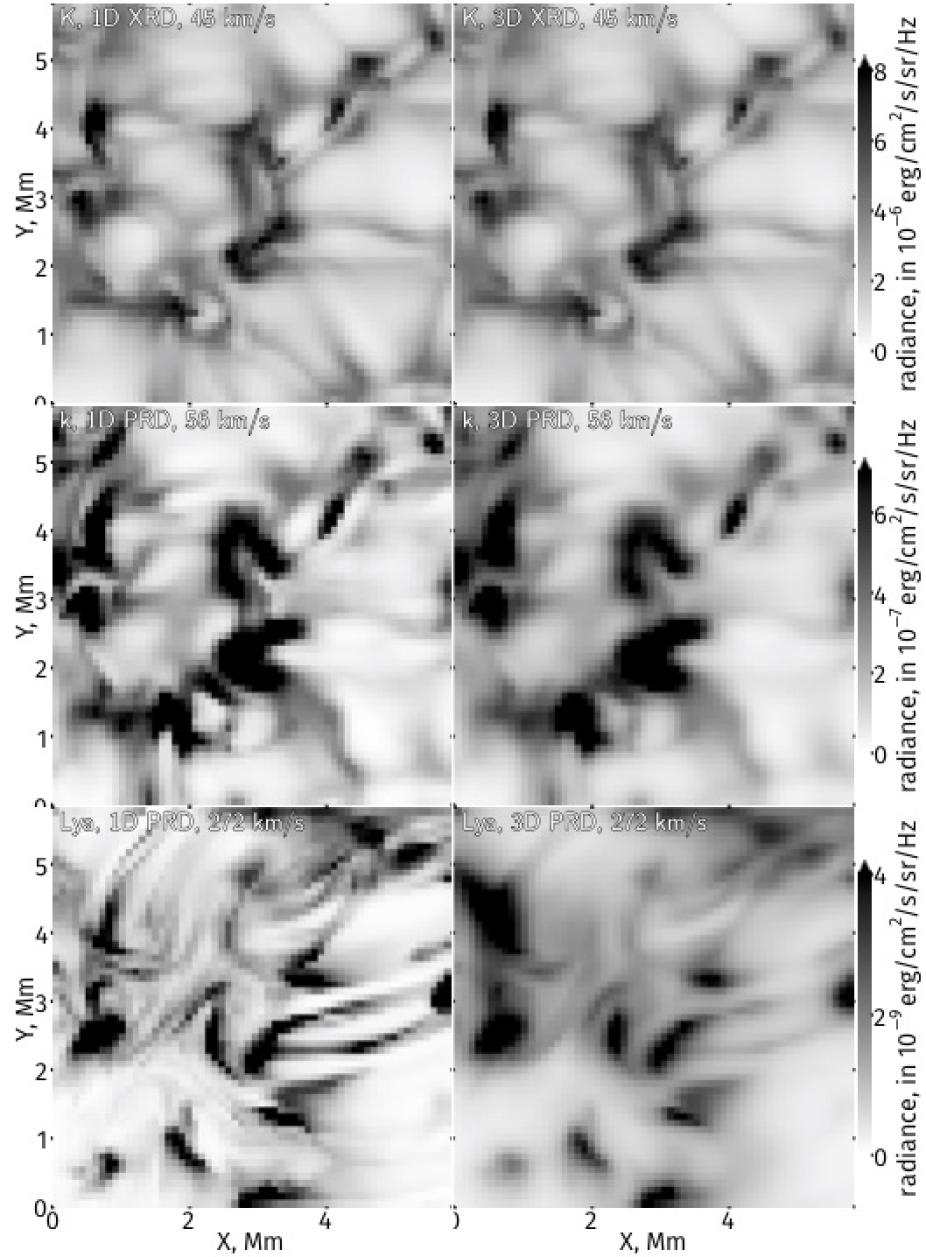Publication Name: ApJ; First HAO Author's Name: Judge
We re-examine a 50+ year-old problem of deep central reversals predicted for strong solar spectral lines, in contrast to the smaller reversals seen in observations. We examine data and calculations for the resonance lines of H I, Mg II and Ca II, the self-reversed cores of which form in the upper chromosphere.

A comparison of 1D and 3D calculations of the brightness of Ca II K (top row), Mg II k (middle row) and H Lα (bottome row), computed as for the k line images, at the Doppler shifts shown.
Based on 3D simulations as well as data for the Mg II lines from IRIS, we argue that the resolution lies not in velocity fields on scales in either of the micro- or macro-turbulent limits. Macro-turbulence is ruled out using observations of optically thin lines formed in the upper chromosphere, and by showing that it would need to have unreasonably special properties to account for critical observations of the Mg II resonance lines from the IRIS mission. The power in ``turbulence' in the upper chromosphere may therefore be substantially lower than earlier analyses have inferred. Instead, in 3D calculations, effects of 3D radiation transport can contribute, but %perhaps not resolve the problem entirely. horizontal radiative transfer produces smoother source functions, smoothing out intensity gradients in wavelength and in space. These effects increase in stronger lines. Our work will have consequences for understanding the onset of the transition region, the energy in motions available for heating the corona, and for the interpretation of polarization data in terms of the Hanle effect applied to resonance line profiles.